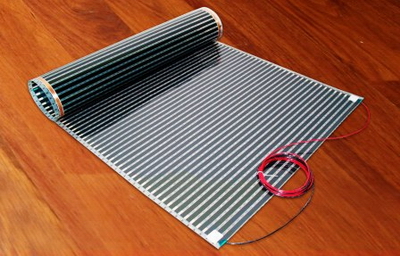Is it possible to put a bulk 3D floor on an infrared warm floor
Hello! Is it possible to lay an infrared warm floor on a floor with an area of 20 squares, and a bulk 3D floor on it? And if so, what is the technology? Can a mixture be poured onto a film? Will the gender “play”?
Elena
Expert Answer
Hello, Elena!
The question of whether it is possible to equip bulk 3D-floors using a film-based infrared heating system today sounds very often. At the same time, consumers are afraid of several points related to both the construction and operation of the heated floor.
Firstly, the reliability and durability of the composite coating applied to the “pie” from several layers of the polymer film is doubtful. Secondly, they ask whether IR heaters can function normally without overheating. And finally, thirdly, people are interested in how safe such a system will be during operation.
We can give a sure answer to these and other questions - bulk compositions can be used for application on infrared film without fear, if you do not deviate from the technology provided by the manufacturer. Such a floor has high strength and wear resistance, and when installed on a monolithic concrete base, it can stand for decades. The good thermal conductivity of a thin layer of polymers helps to remove heat from infrared heaters, so they never overheat.
What is important for our case, the artificial coating undergoes thermal deformation (and even to a small extent) only after heating to temperatures above 60 ° C, which will never be necessary at home. As for the fears about the release of harmful substances, they are completely groundless, since modern epoxy and polyurethane compounds after complete polymerization are absolutely harmless to health, especially if we talk about such a mild heating method that infrared systems provide. The only caveat: methylmethacrylate compounds cannot be used for domestic purposes - their environmental friendliness is a big question.
The “pie” of the warm floor itself is equipped as follows:
- The concrete screed is repaired and leveled;
- A layer of any waterproofing material is laid. At the same time, adjacent strips should be overlapped, with obligatory gluing of joints with adhesive tape;
- Insulation is installed. It can be polystyrene plates or rolled foil material. In the latter case, the thermal insulation is oriented with a metallized coating towards the premises;
- A film underfloor heating system is mounted, on top of which, as described above, the top layer of moisture insulation is laid;
- A “cake” is rolled with a flat roller in order to maximally compact all its components and to expel air between them;
- According to the selected technology, the 3D floor itself is poured, the number of layers of which can reach 5-7. Of course, when mixing and applying an epoxy or polyurethane compound, safety rules must be followed and the manufacturer's recommendations followed.
As a rule, the final setting of the bulk floor requires 24 hours, after which the composition is fully polymerized and acquires the necessary strength and hardness.
Finally, I would like to talk about the fact that not only the bulk floor, but also the substrate pattern should have the necessary quality. Very often, its colors fade over time, and white becomes yellow.Pay close attention to this moment and choose materials only from trusted manufacturers.


